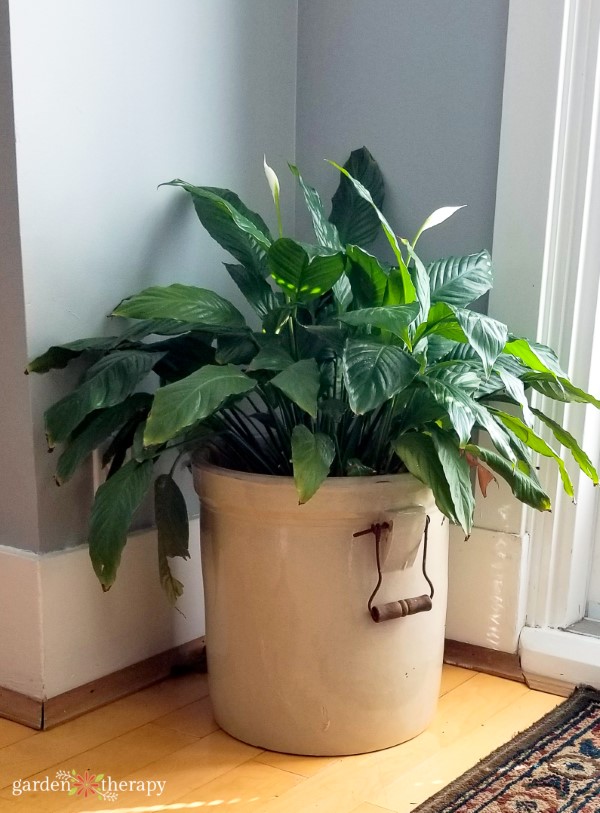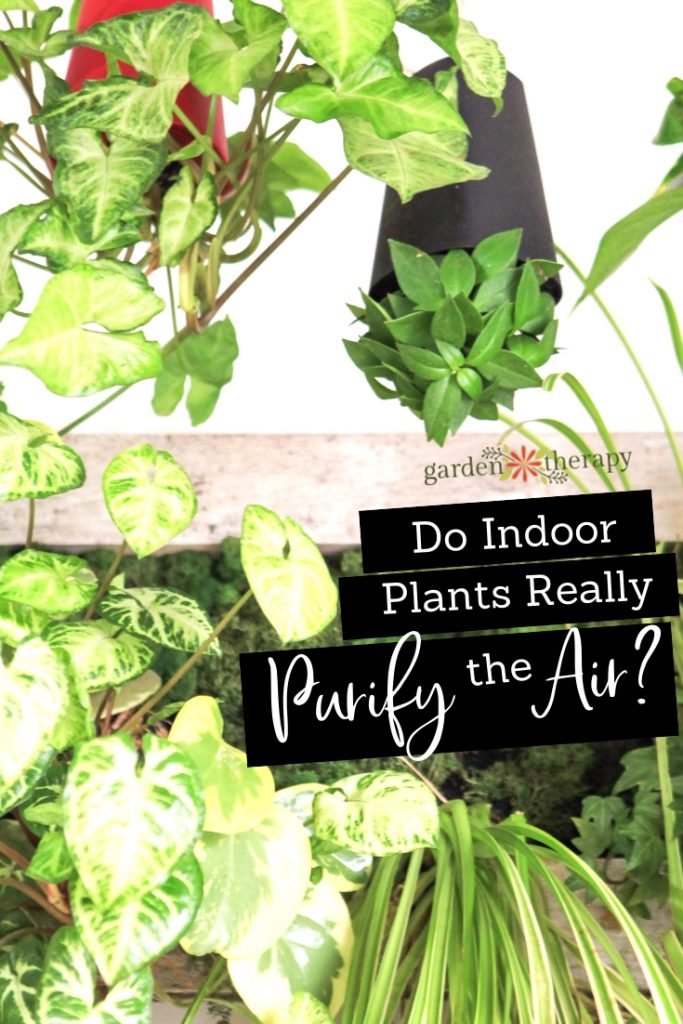Have you heard all the buzz about how indoor plants purify the air in your home? It’s true that plants are biofilters, a term often used for systems that use plants or microorganisms to clean air in order to combat pollution and the presence of harmful toxins. This technology is usually used on a large scale for wastewater treatment facilities and chemical plants, but any system that filters out toxins is a biological filter – and that includes plants, animals, insects, and even you! Does that mean that all the microbes, pollution, and viruses are filtered out of the air if you have some houseplants? There are many myths and claims out there about what houseplants can do for your air quality, so I did a little research on the truth about houseplants and air quality.

Plants as Biofilters
The past couple of summers have been terrible for forest fires here in British Columbia. I’m lucky enough to live in a part of the province where my home wasn’t threatened by fire, but the smoke from wildfires across the province made its way here and caused me to have lung problems, headaches, and stinging eyes. I have been so grateful to have my plants during these smoky seasons, because they make a difference in the freshness of the air, both outside in the garden and inside the house.

All of this got me thinking a lot about air quality, and how indoor air quality is often pretty bad, wildfire season or not. Even if you’re never exposed to wildfire smoke (which I hope is the case!), with technology running constantly, forced heating in the winter, and an increase in chemicals used in everyday life, there is a need more than even for air-purifying measures to be taken within the home.
Which, of course, got me thinking about plants. There’s a lot of hype out there about how indoor plants purify the air, but I wasn’t sure how much of that was true, so I did a little research of my own to learn how plants work as biofilters and how effective they really are at cleaning up airborne toxins.
Plants produce oxygen, which removes some airborne microbes, mold spores, and bacteria from the air we breathe (thanks, plants!).
In addition to producing oxygen and cleaning up the air that way, plants also use their roots to get rid of toxins. The roots actually absorb harmful toxins and convert them into nutrients, which they then use to grow. This is the ultimate in upcycling!

Do Indoor Plants Really Purify the Air?
This is probably not the first time you’ve heard that indoor plants purify the air, but did you know that houseplants can also absorb contaminants like benzene and formaldehyde? These might not sound like things that are hanging around your house, but many cosmetics, cleaning products, and cigarette smoke contain these, making them common toxins around many homes. Houseplants even absorb some harmful radiation given off by technology such as computers and cellphones, but they probably can’t absorb enough of it to significantly reduce the health risks that these technologies entail.

Although there have been a few high-profile studies done to prove the effectiveness of plants at filtering air (yes, that NASA), these studies have all been done in small, sealed environments. Larger, open spaces like houses will not make it so easy for plants to purify the air quite as effectively and there is no evidence that they make a big enough difference to drastically improve health. That being said, they certainly can’t hurt. At the very least, houseplants will remove some toxins from the air and give you a healthy dose of indoor garden therapy.

Some indoor plants purify the air, or more accurately filter the air, more than others. Here is a list of common houseplants that draw the most toxins out of the air.
The Best Air-Filtering Houseplants
- Peace lily (Spathiphyllum ‘Mauna Loa’)
- English ivy (Hedera helix)
- Spider plant (Chlorophytum comosum)
- Snake plant or mother-in-law’s tongue (Sansevieria trifasciata’Laurentii’)
- Rubber plant (Ficus elastica)
- Elephant ear (Philodendron domesticum)
- Weeping fig (Ficus benjamina)
- Gerbera daisy or Barberton daisy (Gerbera jamesonii)
- Pot mum or florist’s chrysanthemum (Chrysantheium morifolium)

Adding a few (or a lot) of these low-maintenance houseplants to your home can make a difference in the quality of the air you breathe, but not as big a difference as many articles claim. They are a beautiful and welcoming addition around the house and can boost your mood, so I say the more houseplants, the better!

For more on houseplants, check out these posts:
- How to Prevent, Identify, and Get Rid of 8 Common Houseplant Pests
- Essential Plants for Stunning Terrariums
- How to Properly Water Air Plants
- Summering Houseplants in Beautiful Arrangements
- Gorgeous Indoor Plants that LOVE the Dark!
- Playing with Houseplants for Indoor Garden Therapy




